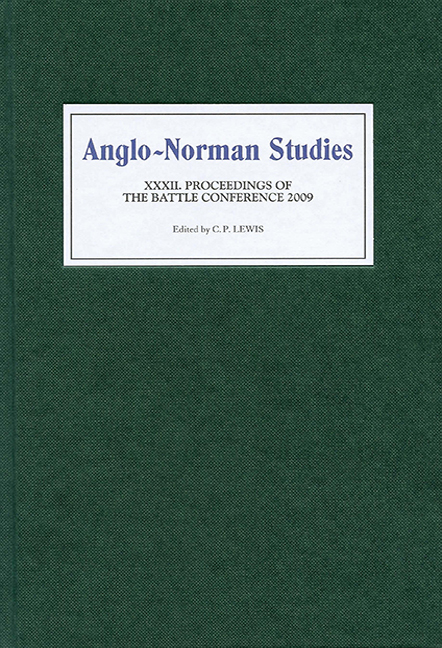34 results
Chapter 1 - Palamon and Arcite: Early Elizabethan Court Theatre
- from Part I - Elizabethan Court Theatre
-
-
- Book:
- Performances at Court in the Age of Shakespeare
- Published online:
- 31 October 2019
- Print publication:
- 24 October 2019, pp 17-34
-
- Chapter
- Export citation
Chapter 12 - Thomas Heywood and the Publishing of The Jew of Malta
- from Part II - Transmitting Marlowe
-
-
- Book:
- Christopher Marlowe, Theatrical Commerce, and the Book Trade
- Published online:
- 28 September 2018
- Print publication:
- 18 October 2018, pp 182-194
-
- Chapter
- Export citation
133 - Shakespeare and Company in Court Records
- from Part XIV - Shakespeare’s Early Reception (to 1660)
-
-
- Book:
- The Cambridge Guide to the Worlds of Shakespeare
- Published online:
- 17 August 2019
- Print publication:
- 21 January 2016, pp 1003-1009
-
- Chapter
- Export citation
Contributors
-
-
- Book:
- Trauma Anesthesia
- Published online:
- 05 April 2015
- Print publication:
- 09 April 2015, pp vii-x
-
- Chapter
- Export citation
Chapter 4 - Shock management
- from Section 1 - Initial management of the trauma patient
-
-
- Book:
- Trauma Anesthesia
- Published online:
- 05 April 2015
- Print publication:
- 09 April 2015, pp 65-78
-
- Chapter
- Export citation
Contributors
-
-
- Book:
- Operating Room Leadership and Management
- Published online:
- 05 October 2012
- Print publication:
- 04 October 2012, pp ix-xi
-
- Chapter
- Export citation
24 - Safety, quality, and pay-for-performance
- from Section 4 - Safety, standards, and information technology
-
-
- Book:
- Operating Room Leadership and Management
- Published online:
- 05 October 2012
- Print publication:
- 04 October 2012, pp 244-252
-
- Chapter
- Export citation
Contributors
-
-
- Book:
- Essentials of Trauma Anesthesia
- Published online:
- 05 July 2012
- Print publication:
- 07 June 2012, pp xi-xiv
-
- Chapter
- Export citation
Chapter 6 - Blood component therapy and trauma coagulopathy
- from Section 1 - Core Principles in Trauma Anesthesia
-
-
- Book:
- Essentials of Trauma Anesthesia
- Published online:
- 05 July 2012
- Print publication:
- 07 June 2012, pp 66-75
-
- Chapter
- Export citation
20 - Uncontrolled hemorrhage
-
-
- Book:
- Clinical Fluid Therapy in the Perioperative Setting
- Published online:
- 05 August 2011
- Print publication:
- 04 August 2011, pp 177-183
-
- Chapter
- Export citation
Contributors
-
-
- Book:
- Clinical Fluid Therapy in the Perioperative Setting
- Published online:
- 05 August 2011
- Print publication:
- 04 August 2011, pp vi-viii
-
- Chapter
- Export citation
Frontmatter
-
- Book:
- Anglo-Norman Studies XXXII
- Published by:
- Boydell & Brewer
- Published online:
- 28 April 2017
- Print publication:
- 21 July 2010, pp i-iv
-
- Chapter
- Export citation
Miscellaneous Endmatter
-
- Book:
- Anglo-Norman Studies XXXII
- Published by:
- Boydell & Brewer
- Published online:
- 28 April 2017
- Print publication:
- 21 July 2010, pp 231-242
-
- Chapter
- Export citation
List of Maps and Tables
-
- Book:
- Anglo-Norman Studies XXXII
- Published by:
- Boydell & Brewer
- Published online:
- 28 April 2017
- Print publication:
- 21 July 2010, pp vi-vi
-
- Chapter
- Export citation
Abbreviations
-
- Book:
- Anglo-Norman Studies XXXII
- Published by:
- Boydell & Brewer
- Published online:
- 28 April 2017
- Print publication:
- 21 July 2010, pp ix-xii
-
- Chapter
- Export citation
Contents
-
- Book:
- Anglo-Norman Studies XXXII
- Published by:
- Boydell & Brewer
- Published online:
- 28 April 2017
- Print publication:
- 21 July 2010, pp v-v
-
- Chapter
- Export citation

Anglo-Norman Studies XXXII
- Proceedings of the Battle Conference 2009
-
- Published by:
- Boydell & Brewer
- Published online:
- 28 April 2017
- Print publication:
- 21 July 2010
(H84) Multidisciplinary Team Discharge Rounding Improves Daily Hospital Surge Capacity and May Benefit Disaster Preparedness
-
- Journal:
- Prehospital and Disaster Medicine / Volume 24 / Issue S1 / February 2009
- Published online by Cambridge University Press:
- 17 February 2017, p. s108
- Print publication:
- February 2009
-
- Article
-
- You have access
- Export citation
Continuous Vital Signs Acquisition Improves Prehospital Trauma Triage
-
- Journal:
- Prehospital and Disaster Medicine / Volume 24 / Issue S1 / February 2009
- Published online by Cambridge University Press:
- 17 February 2017, p. s139
- Print publication:
- February 2009
-
- Article
-
- You have access
- Export citation
(N42) In-Flight Vital Signs Blackbox for Trauma Care
-
- Journal:
- Prehospital and Disaster Medicine / Volume 24 / Issue S1 / February 2009
- Published online by Cambridge University Press:
- 17 February 2017, pp. s52-s53
- Print publication:
- February 2009
-
- Article
-
- You have access
- Export citation



